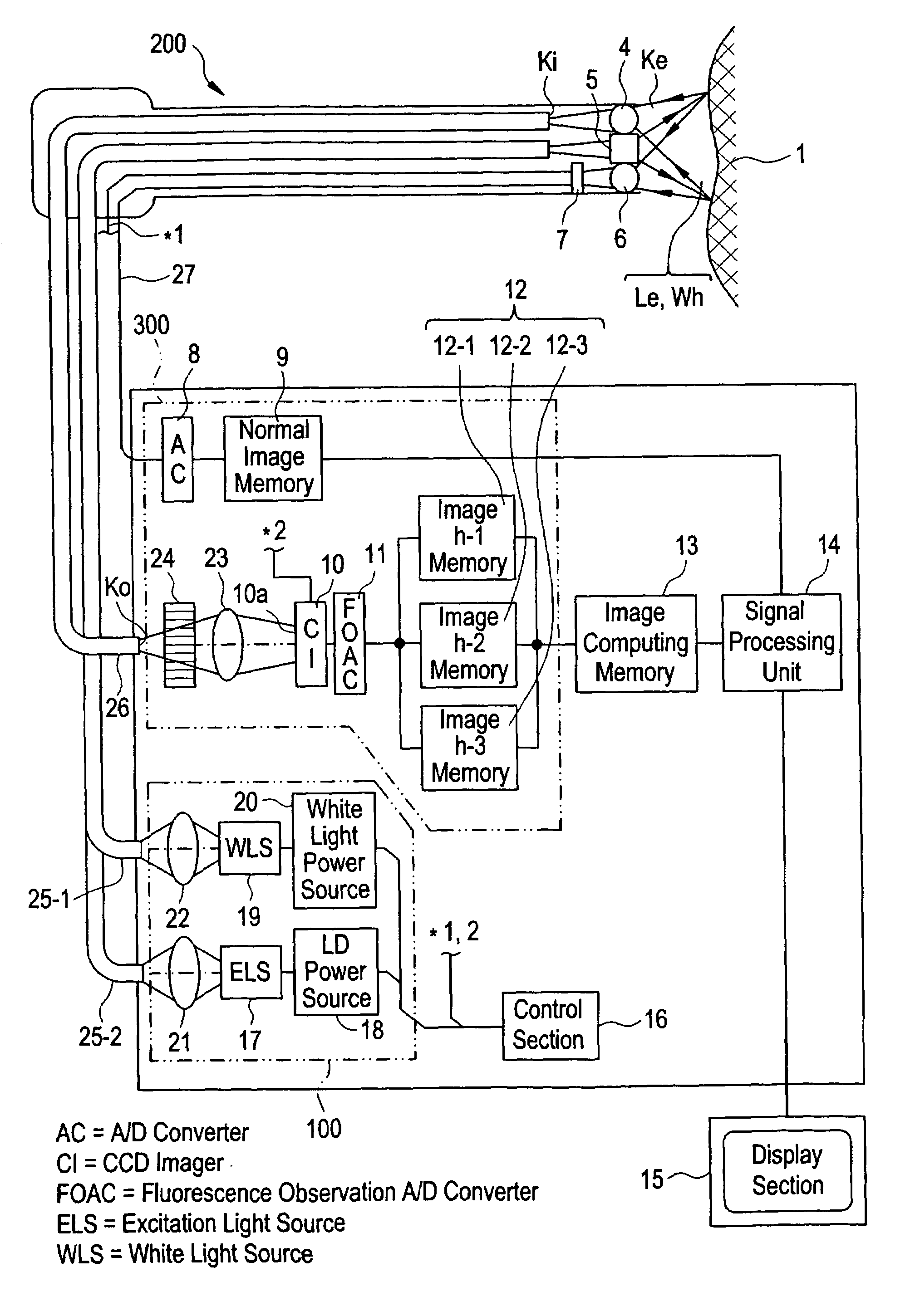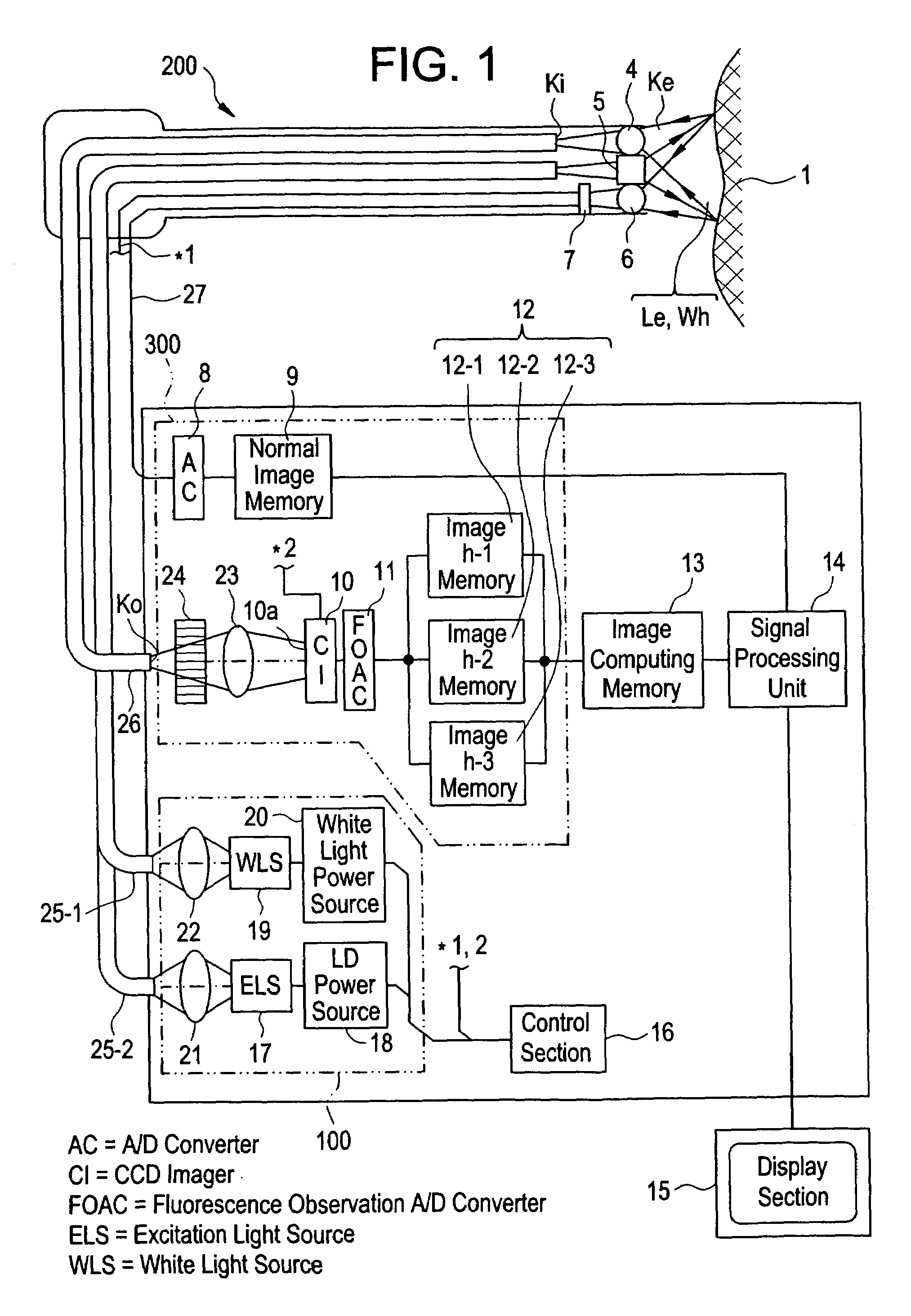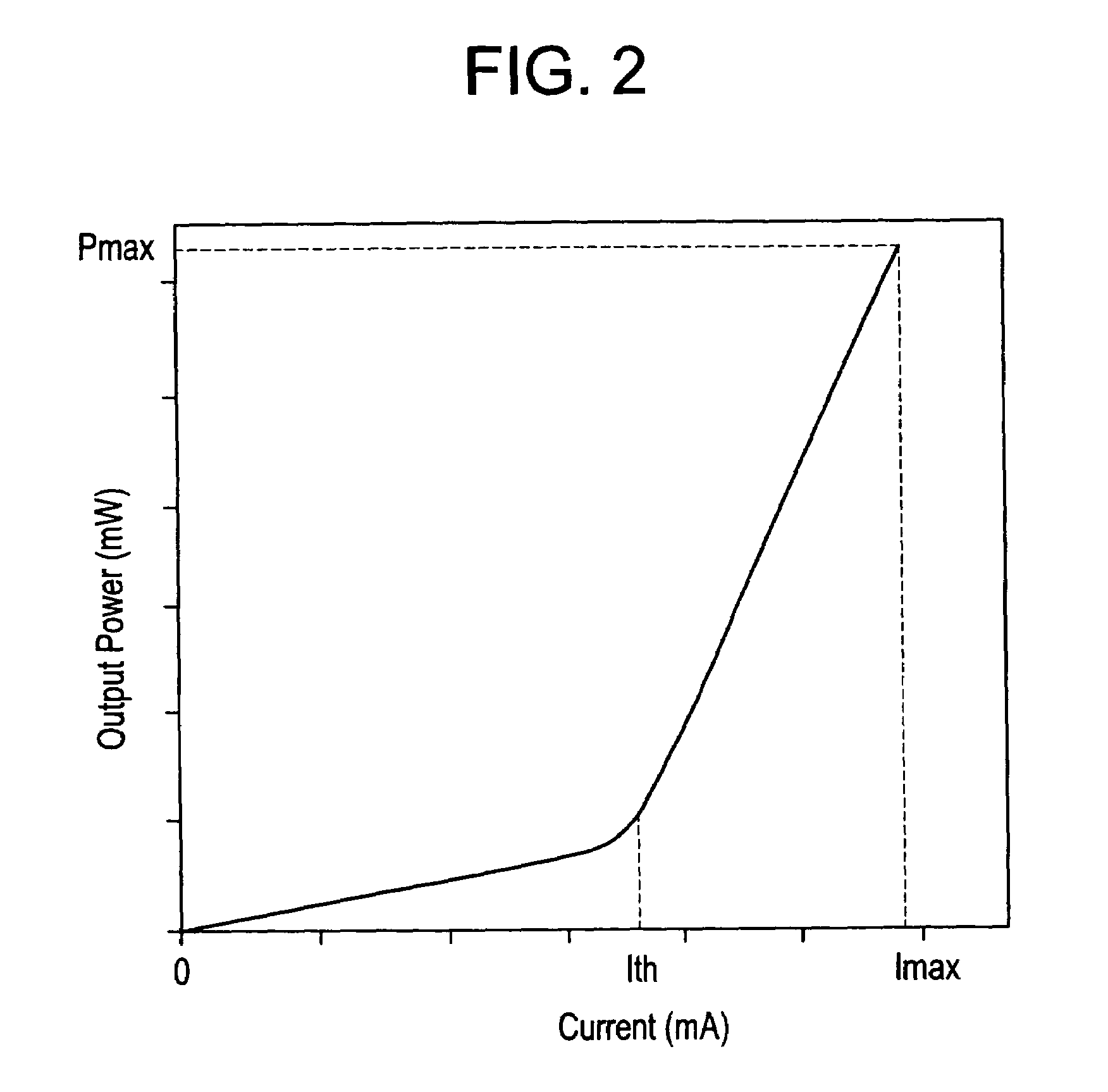Fluorescence observing apparatus
a fluorescence observing and apparatus technology, applied in the direction of radiation measurement, optical radiation measurement, spectral modifiers, etc., can solve the problems of low rate at which external light and background light (such as indoor illumination) are formed as noise components, extremely large apparatus size and extremely high cost, and weak light intensity of semiconductor lasers, etc., to achieve reduced oscillation threshold current, higher output or peak power, and suppressed rise in temperature of end face
- Summary
- Abstract
- Description
- Claims
- Application Information
AI Technical Summary
Benefits of technology
Problems solved by technology
Method used
Image
Examples
first embodiment
[0067]Referring now in greater detail to the drawings and initially to FIG. 1, there is shown a fluorescence observing apparatus constructed according to the present invention. The fluorescence observing apparatus comprises (1) a light source section 100 equipped with an excitation light source and a visible light (white light) source; (2) a flexible endoscope 200 for forming a normal image obtained by irradiating white light Wh guided from the light source section 100, to the tissue of an organism and also propagating the image of fluorescence (obtained by irradiating excitation light Le likewise guided from the light source section 100, to the tissue) to an optical fiber; (3) an image taking-in section 300 for taking in and storing the normal image and fluorescence image obtained by the endoscope 200, as image signals; (4) an image computing memory 13 equipped with the computation function of discriminating a cancerous tissue and a normal tissue by receiving and computing the imag...
second embodiment
[0093]In the second embodiment, an excitation light source 17 employs an InGaN semiconductor later of multi-quantum cell structure (active layer InGaN / InGaN) of oscillating wavelength 400 nm and is pulse-operated with a dc bias current greater than or equal to an oscillating threshold current Ith (mA).
[0094]In addition, the pulse oscillation of the above-mentioned semiconductor laser is driven so that, as shown in FIG. 12, the integrated value Bo of the output values per unit time (per 1 / 60 sec) of LED light (spontaneous emission light), which occurs by dc bias current, and the integrated value Eo of the pulse oscillation output values per unit time become less than or equal to the integrated value Jo of the continuous maximum output values per unit time, and the pulse oscillation duty ratio is set so that a peak value greater than or equal to the continuous maximum output value is obtained. That is, the pulse oscillation duty ratio is set so that
Eo+Bo≦Jo.
[0095]Furthermore, since th...
third embodiment
[0103]Next, a description will be given of the operation in the above-mentioned
[0104]The fluorescence observing apparatus of the third embodiment is controlled by a controller 16 in accordance with a timing chart shown in FIG. 18. As shown in the timing chart of FIG. 18, pulsed excitation light Le, formed from 3 divided pulses having the same rectangular waveform, is emitted from an excitation light source 17. The excitation light Le is guided to an endoscope 200 through an excitation light condenser lens 21 and an excitation light guide 25-2 and is irradiated toward a tissue 1 through an illuminating lens 5.
[0105]The fluorescence, emitted from the tissue 1 by irradiation of the excitation light Le, is formed on an end face Ki of a fluorescence image fiber 26 by an fluorescence image objective lens 4 and is propagated to the other end face Ko. With respect to the fluorescence image propagated to the end face Ko, the excitation light Le contained in the fluorescence Ke (which is a me...
PUM
| Property | Measurement | Unit |
|---|---|---|
| emission time | aaaaa | aaaaa |
| melting point | aaaaa | aaaaa |
| pulse width | aaaaa | aaaaa |
Abstract
Description
Claims
Application Information
 Login to View More
Login to View More - R&D
- Intellectual Property
- Life Sciences
- Materials
- Tech Scout
- Unparalleled Data Quality
- Higher Quality Content
- 60% Fewer Hallucinations
Browse by: Latest US Patents, China's latest patents, Technical Efficacy Thesaurus, Application Domain, Technology Topic, Popular Technical Reports.
© 2025 PatSnap. All rights reserved.Legal|Privacy policy|Modern Slavery Act Transparency Statement|Sitemap|About US| Contact US: help@patsnap.com



